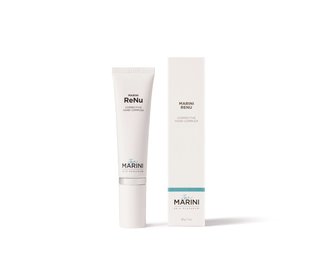The Ultimate Guide to Skincare: How to Achieve Healthy, Glowing Skin
The Ultimate Guide to Skincare: How to Achieve Healthy, Glowing Skin
Blog Article
FACIAL In Redondo Beach, CA is more than just an everyday routine; it's a form of self-care that will enhance your confidence and overall well-being. With the right approach, it is possible to achieve healthy, glowing skin at any age. This comprehensive guide will walk you through the requirements of skincare, from understanding your skin type to selecting the proper products and creating a regimen which works for you.
Understanding Your Skin Type
Before you can create a powerful skincare routine, it's important to know your skin layer type. This will help you choose products which address your particular needs. The main pigment concentrations are:
Normal Skin:
Balanced, not too oily or too dry, with minimal imperfections along with a healthy appearance.
Oily Skin:
Characterized by excess oil production, bringing about a shiny appearance and a higher odds of acne and enlarged pores.
Dry Skin:
Lacks moisture, often feeling tight, flaky, or rough. Dry skin are often more prone to redness and irritation.
Combination Skin:
A mixture of oily and dry areas, typically with the oily T-zone (forehead, nose, chin) and drier cheeks.
Sensitive Skin:
Easily irritated by products, environmental factors, or even stress. It often requires gentle, soothing products.
Building a Basic Skincare Routine
A solid skincare routine doesn't have to be complicated. The following steps make up the foundation of an efficient regimen:
Cleansing:
Cleansing removes dirt, oil, makeup, and impurities from your skin. Use a gentle cleanser ideal for your skin type, and wash see your face twice a day—once in the morning and once before going to sleep.
Toning:
Toners help balance your epidermis's pH, remove any leftover impurities after cleansing, and prepare your skin to absorb subsequent products. Look for alcohol-free toners with soothing ingredients like rose water or chamomile.
Moisturizing:
Moisturizers hydrate and protect the skin, sealing in moisture and keeping your skin layer soft and supple. Choose a lightweight, non-comedogenic moisturizer for greasy skin, and a richer, more hydrating formula for dried-out skin.
Sun Protection:
Sunscreen is a vital step in any skincare routine. It protects your skin from harmful UV rays, which may cause premature aging, hyperpigmentation, and even skin cancer. Use a broad-spectrum sunscreen with a minimum of SPF 30 each day, regardless if it's cloudy.
Advanced Skincare Steps
For those aiming to address specific skin concerns or enhance their routine, consider incorporating the next steps:
Exfoliation:
Exfoliation removes the dead skin cells, making an effort to reveal fresher, smoother skin underneath. Depending on your epidermis type, you can choose between physical exfoliants (scrubs) or chemical exfoliants (AHAs, BHAs). Exfoliate 1-3 times per week, but try not to over-exfoliate, simply because this can irritate your skin layer.
Serums:
Serums are concentrated formulas that target specific skin concerns, such as fine lines, brown spots, or acne. Common ingredients include hyaluronic acid for hydration, vitamin C for brightening, and retinol for anti-aging. Apply serums after cleansing and before moisturizing.
Masks:
Face masks provides an extra boost for a skincare routine. Whether you're aiming to hydrate, detoxify, or soothe your skin, there’s a mask for you. Use masks 1-2 times per week for best results.
Eye Creams:
The skin around the eyes is delicate and vulnerable to showing ravages of time. Eye creams are formulated to handle issues like puffiness, dark circles, and face lines. Gently apply a close look cream daily, with your ring finger to stop tugging the skin.
Addressing Common Skin Concerns
Acne:
For acne-prone skin, look for products with salicylic acid or benzoyl peroxide, which help to clear pores and reduce breakouts. Avoid overly harsh products that may strip your skin of its skin oils and cause further irritation.
Aging:
As we age, the skin we have loses elasticity and moisture. Incorporate anti-aging ingredients like retinol, peptides, and antioxidants to your routine in lowering the appearance of wrinkles and wrinkles. Regular moisturizing and protection from the sun are also step to maintaining youthful skin.
Hyperpigmentation:
Dark spots and uneven pores and skin can be treated with brightening ingredients like vitamin C, niacinamide, and licorice root extract. Consistent usage of sunscreen is essential to prevent further darkening of spots.
Sensitivity:
For sensitive skin, give attention to soothing, hydrating ingredients like natural aloe vera, chamomile, and ceramides. Avoid products with alcohol, fragrance, or harsh chemicals that will trigger irritation.
Skincare Tips for Every Age
In Your 20s:
Focus on prevention by establishing a frequent routine with cleansing, moisturizing, and sun-protection. Start using antioxidants like vitamin C to safeguard against environmental damage.
In Your 30s:
Begin incorporating anti-aging products, for example retinol and peptides, to deal with early aging process. Hydration becomes more important, so consider adding a hyaluronic acid serum to your routine.
In Your 40s and Beyond:
Prioritize hydration, as skin tends to become drier with age. Use richer moisturizers and nourishing oils. Continue using anti-aging products and consider adding treatments like peels or professional facials to further improve your routine.
Achieving healthy, glowing skin may be possible with the proper knowledge plus a consistent skincare routine tailored in your needs. Start by understanding the skin type, creating a basic regimen, and addressing specific concerns as they arise. Remember, skincare is not a one-size-fits-all approach, so be patient and happy to adjust your routine as your epidermis's needs change as time passes. With dedication and the proper products, you are able to enjoy FACIAL In Redondo Beach, CA at any age.